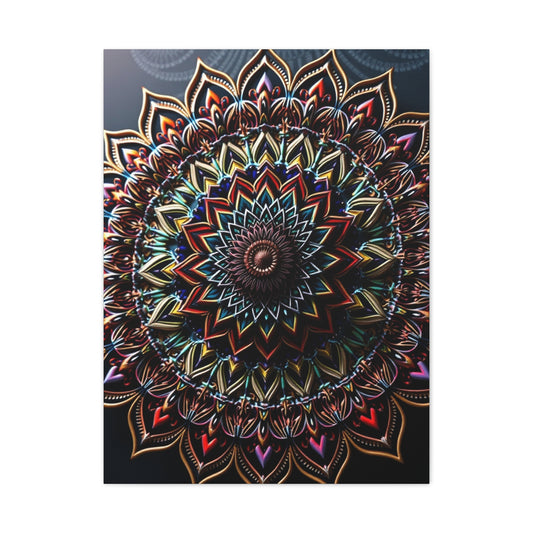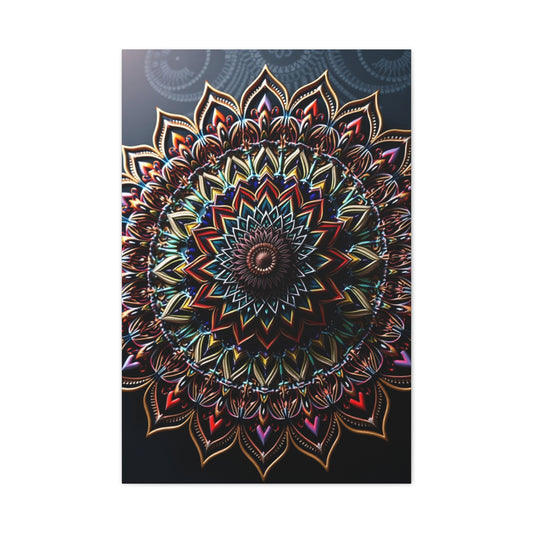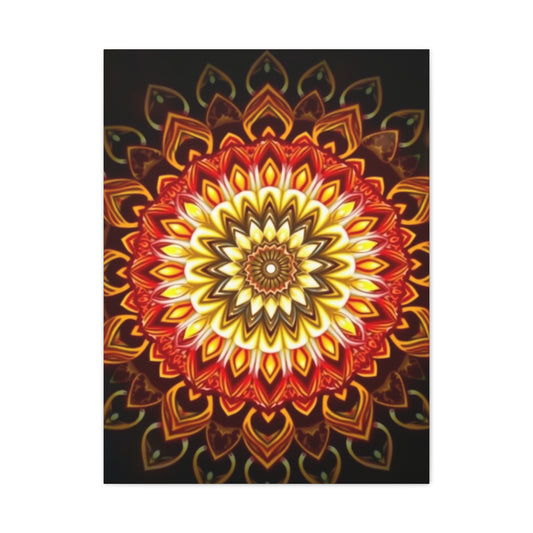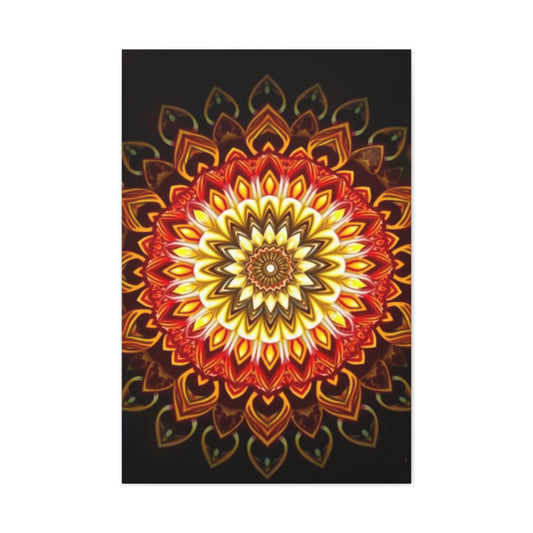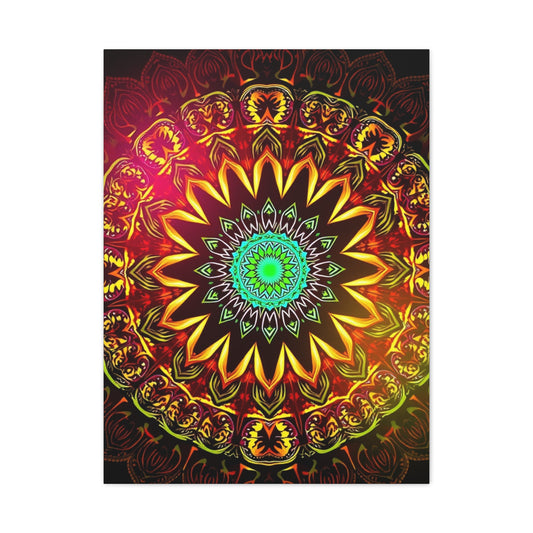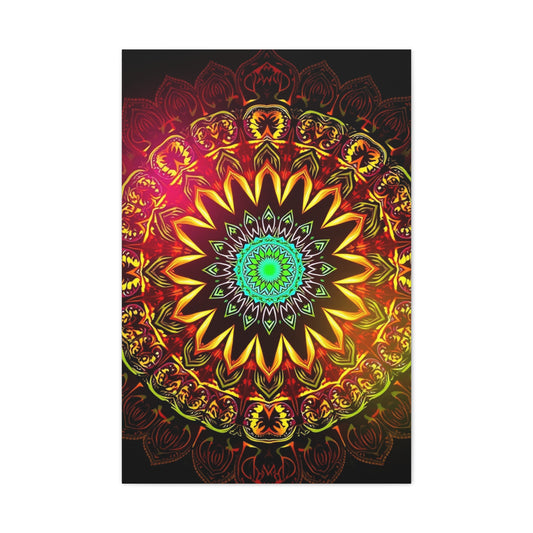Eid is one of the most cherished times of the year for Muslims across the globe. It symbolizes not only the culmination of spiritual devotion but also the joy of community, gratitude, and family togetherness. Whether it is Eid al-Fitr, marking the end of Ramadan, or Eid al-Adha, celebrating sacrifice and reflection, both holidays serve as meaningful occasions to reconnect with loved ones, extend kindness, and share heartfelt greetings.
In many cultures, exchanging Eid Mubarak wishes has become a timeless tradition. These words of blessing are not just simple greetings—they carry warmth, love, and goodwill. A sincere message can strengthen bonds, spread happiness, and bring people closer, even if they are separated by distance. During times when face-to-face gatherings are not always possible, heartfelt wishes through calls, texts, or written cards offer a beautiful way to remind others of their importance in our lives.
The Meaning Behind Eid Greetings
When someone says “Eid Mubarak,” they are not just wishing a happy holiday. The phrase carries layers of meaning. “Eid” refers to festivity, celebration, or recurring happiness, while “Mubarak” means blessed. Together, the phrase conveys a prayerful wish for a joyful and blessed celebration. It is both a spiritual blessing and an expression of goodwill, making it a deeply cherished sentiment among Muslims.
Different cultures enrich this greeting with local languages and traditions. In Turkey, people may say “Bayramınız Kutlu Olsun.” In South Asia, phrases like “Chand Raat Mubarak” are exchanged before Eid day. In Arab regions, one may hear “Kul ‘am wa antum bikhair,” meaning “May you be well throughout the year.” These variations reflect the diversity of Muslim communities worldwide, yet they all capture the same spirit of joy, blessing, and connection.
Why Sharing Eid Wishes Matters
Words have the power to uplift hearts and bring people together. During Eid, exchanging greetings strengthens ties among family, friends, and even acquaintances. For many, receiving a warm message is enough to brighten their day and remind them that they are remembered and valued.
Eid greetings also promote unity across communities. They transcend differences in age, culture, or background. Whether spoken, written, or shared digitally, these words create a bridge of love and understanding. In a world where daily life often becomes busy and fragmented, Eid wishes offer a chance to pause, reflect, and prioritize human connection.
Traditional and Modern Ways of Sharing Wishes
The methods of sharing Eid greetings have evolved. Traditionally, people exchanged wishes in person during visits to family homes, neighborhood gatherings, or community events. Handshakes, hugs, and shared meals were accompanied by heartfelt “Eid Mubarak” wishes.
In modern times, technology has expanded the possibilities. Phone calls, text messages, and instant messaging apps allow people to send greetings instantly, no matter how far apart they are. Many also send e-cards or post festive wishes on social media, reaching a wide circle of friends and family. Despite these advancements, the essence remains the same: spreading love, gratitude, and blessings.
Heartfelt Eid Mubarak Wishes to Inspire
While a simple “Eid Mubarak” carries great meaning, sometimes adding a few heartfelt words can make your message even more personal. Here are examples of warm wishes you can share with your loved ones:
-
Wishing you a joyous Eid filled with peace, love, and prosperity.
-
May your heart be filled with gratitude and your home with happiness this Eid.
-
May Allah’s blessings be with you today and always, guiding you toward success and peace.
-
Hoping your Eid is as bright as the crescent moon and as sweet as the festive treats.
-
Wishing you and your family love, harmony, and countless blessings on this special day.
These simple yet meaningful words can be adapted to suit your relationship with the recipient, whether you are writing to a close family member, a dear friend, or even a colleague.
Eid as a Celebration of Gratitude
One of the core values of Eid is gratitude. After the month-long fast of Ramadan, Eid al-Fitr is a time to give thanks for strength, patience, and spiritual growth. Eid al-Adha, commemorating the devotion of Prophet Ibrahim, emphasizes gratitude for faith, sacrifice, and the blessings of family.
Exchanging greetings becomes an expression of this gratitude. By wishing others well, we acknowledge the blessings in our own lives and share them outwardly. Gratitude is most powerful when it inspires generosity, kindness, and love. This is why many pair their Eid greetings with acts of giving, whether through charity, gifts, or sharing meals with neighbors and the less fortunate.
The Joy of Togetherness
Eid is as much about community as it is about individual reflection. Families gather for festive meals, children receive gifts, and mosques welcome worshippers for communal prayers. Greetings exchanged in these settings carry a sense of togetherness, reminding everyone that they are part of something greater—a community bound by faith and compassion.
Even for those who live far from their families, sending heartfelt messages can create a sense of closeness. A short message can travel across continents, connecting people in celebration despite physical distance. In this way, Eid greetings bridge not only emotional gaps but also geographical ones.
Creative Ideas for Expressing Wishes
If you want to make your Eid greetings memorable, creativity can go a long way. Instead of sending a standard message, you might:
-
Share a personalized poem or short verse that captures the joy of Eid.
-
Write a few sentences about what the person means to you, adding a blessing for their future.
-
Incorporate cultural touches, such as traditional sayings or references to favorite festive foods.
-
Use calligraphy or artistic designs if sending a written card, making the greeting visually special.
-
Record a short audio or video message for a personal touch.
These small gestures show effort and thoughtfulness, making your wishes stand out and feel more meaningful.
Spreading Joy Beyond Loved Ones
While family and friends are the most common recipients of Eid wishes, extending greetings to neighbors, colleagues, and even strangers can spread the spirit of Eid even further. Offering a warm “Eid Mubarak” to someone outside your immediate circle fosters goodwill, builds bridges, and nurtures understanding between communities.
In many multicultural societies, Eid greetings are exchanged even among people of different faiths. Non-Muslim friends may send wishes to their Muslim neighbors, and Muslims often return the gesture during other holidays. These acts of mutual respect and kindness strengthen social harmony and celebrate the diversity of human connection.
The Timelessness of Eid Greetings
Despite the passing of time and the changes in how we communicate, the practice of exchanging Eid greetings remains timeless. Whether spoken at a family gathering, written in a letter, or typed in a digital message, these words continue to hold power. They remind us that happiness grows when shared and that blessings become more meaningful when extended to others.
Eid may only come twice a year, but the love, peace, and gratitude shared through these greetings have lasting effects. They plant seeds of kindness that carry forward into everyday life, reminding us of the importance of compassion, empathy, and community.
Eid is a festival that transcends geography, language, and traditions while maintaining a unifying essence of joy, gratitude, and connection. Though the central message of “Eid Mubarak” is universal, the way people convey their greetings varies beautifully across cultures. Exploring these expressions reveals not only the diversity of Muslim communities worldwide but also the depth of emotion and spirituality carried in each greeting.
A Global Celebration of Words
Across continents, Muslims have developed unique ways to extend Eid greetings. In South Asia, families and communities often greet each other with “Eid Mubarak” followed by warm embraces. Children look forward to receiving Eid gifts or money from elders, often accompanied by words of blessing. In Arab regions, it is common to say “Taqabbalallahu minna wa minkum,” which means “May Allah accept from us and from you,” reflecting a deeply spiritual wish.
In Indonesia, the world’s largest Muslim-majority country, greetings often include the phrase “Selamat Hari Raya Idul Fitri” along with “Mohon maaf lahir dan batin,” meaning “Forgive me for my physical and emotional wrongdoings.” This highlights the importance of reconciliation and forgiveness as central themes of Eid.
In African nations such as Nigeria, Muslims exchange greetings like “Barka da Sallah,” blending faith with local linguistic traditions. Meanwhile, in Turkey, phrases such as “İyi Bayramlar” or “Bayramınız mübarek olsun” emphasize the celebratory nature of the holiday.
These variations show how Eid greetings are not simply formalities but cultural treasures that embody the values, history, and spirituality of each community.
The Language of Blessings
While words differ, the intent remains the same: to wish happiness, peace, and blessings. Eid greetings carry a sense of prayer, often asking for divine guidance, forgiveness, or prosperity for the recipient. This makes them more than polite expressions—they become spiritual offerings.
When someone says, “May Allah bless you and your family this Eid,” it is more than a casual wish. It is a heartfelt prayer that acknowledges the bond between faith, family, and community. Such greetings foster a sense of care and belonging, reminding individuals that they are part of a supportive circle.
Personalizing Eid Wishes
Although traditional phrases are timeless, many people choose to personalize their greetings to make them more meaningful. A personalized message shows thought and effort, transforming a simple greeting into a lasting memory. For example:
-
“On this Eid, I pray for your health, happiness, and endless blessings. May your home always be filled with love.”
-
“May the joy of Eid be with you not just today, but throughout the year ahead.”
-
“Sending you warm wishes for peace, laughter, and togetherness on this blessed day.”
Such messages are flexible; they can be written on cards, spoken during visits, or shared in digital form. They allow the sender to express affection while weaving in blessings unique to the recipient’s life circumstances.
The Role of Forgiveness in Eid Greetings
One of the most profound aspects of Eid greetings is their connection to forgiveness and reconciliation. Both Eid al-Fitr and Eid al-Adha emphasize mercy, compassion, and the importance of mending relationships. In many cultures, it is common to apologize for past mistakes and seek forgiveness from loved ones during Eid.
For example, in Malaysia and Indonesia, the act of seeking forgiveness is an integral part of the celebration. Families often say, “Mohon maaf lahir dan batin,” asking for pardon for any wrongdoings in word or action. This exchange reflects the belief that Eid is not just about external celebration but also about inner purification and renewed harmony with others.
This focus on forgiveness deepens the meaning of Eid greetings. They are not simply wishes for joy but also opportunities to heal relationships, let go of grudges, and begin anew with love and understanding.
Creativity in Modern Eid Wishes
In today’s world, where technology connects people instantly, creativity has expanded how greetings are shared. Beyond the traditional spoken wishes, people now use digital platforms to design personalized messages, send voice notes, or create festive visuals. Some record heartfelt videos, while others craft poetic lines or share reflective quotes.
Creative approaches may include:
-
Writing short verses or couplets inspired by the beauty of Eid.
-
Sending photo messages with warm captions that capture family moments.
-
Sharing quotes from the Qur’an or Hadith that reflect the spirit of the holiday.
-
Designing handmade greeting cards with unique artwork or calligraphy.
This creativity not only adds a personal touch but also makes the exchange of wishes more memorable. While the words “Eid Mubarak” remain central, the artistic expression surrounding them can vary widely, reflecting the personality and thoughtfulness of the sender.
Wishes Beyond Borders
One of the most heartwarming aspects of Eid greetings is their ability to transcend boundaries. Muslims living in non-Muslim majority countries often receive greetings from neighbors, colleagues, and friends of other faiths. This exchange creates mutual respect and understanding, fostering harmony in diverse communities.
When non-Muslims share an “Eid Mubarak” with their Muslim friends, it is seen as a gesture of kindness and inclusion. Likewise, Muslims extend their greetings warmly, appreciating the acknowledgment of their special day. This cross-cultural exchange enriches relationships, reminding everyone that kindness and goodwill are universal values.
The Role of Eid Greetings in Diaspora Communities
For Muslims living far from their countries of origin, Eid greetings take on even greater significance. In diaspora communities, greetings are often the bridge that keeps traditions alive. Families may gather in local mosques or community centers, where greetings are exchanged in multiple languages, blending cultural diversity into a shared celebration.
Digital communication also becomes crucial. A simple video call or message sent across continents can ease the longing for family gatherings back home. In these cases, Eid greetings become symbols of resilience and continuity, preserving bonds across distances.
Generational Perspectives on Eid Wishes
Different generations often approach Eid greetings in their own unique ways. Elders may prefer traditional expressions, valuing the cultural and spiritual roots of familiar phrases. For them, “Eid Mubarak” is timeless and sufficient. Younger generations, however, often add modern twists, using emojis, hashtags, or creative digital formats to share their joy.
This blending of old and new enriches the celebration. It shows how traditions adapt while preserving their essence. The core values—gratitude, joy, and connection—remain intact, even as expressions evolve with time.
The Emotional Power of Eid Greetings
At their heart, Eid greetings are about emotion. They express joy after a period of patience and sacrifice, gratitude for blessings received, and hope for a brighter future. They acknowledge the importance of family ties, community, and friendship.
The emotional power lies not just in the words but in the intent. A heartfelt greeting, spoken with sincerity, can bring comfort, heal wounds, or spark joy. It is this emotional resonance that makes Eid greetings so enduring across centuries and cultures.
Eid has always been more than just a holiday—it is a celebration that blends spirituality with human connection, gratitude with generosity, and tradition with joy. One of the most beautiful parts of Eid is how it brings people closer, strengthening family ties, nurturing friendships, and uniting communities. At the center of this togetherness lies the tradition of exchanging greetings. From a simple “Eid Mubarak” to more elaborate blessings, these words embody the warmth and harmony of the season.
The Role of Family in Eid Greetings
Family lies at the heart of every Eid celebration. The early morning prayers, shared meals, and festive traditions all revolve around strengthening family bonds. Greeting each other warmly is often the first step in this process. Children approach their parents and grandparents with cheerful “Eid Mubarak” wishes, while elders respond with blessings and, in many cultures, small gifts or money known as Eidi.
These greetings are not just formalities; they serve as affirmations of love and respect within families. For example, in many households, elders offer heartfelt prayers such as, “May Allah bless you with health and success,” or “May your life always be filled with happiness and faith.” These blessings create a sense of security and encouragement for the younger generation, reminding them that they are cherished and supported.
Children and the Joy of Eid Greetings
For children, Eid is an especially magical time. Their excitement begins the night before, during Chand Raat, when families prepare clothes, decorate homes, and anticipate the next day’s celebrations. On Eid morning, children eagerly greet family members, often with wide smiles and enthusiastic wishes.
Receiving Eid after greeting elders makes the ritual even more memorable. Beyond the material joy, these moments teach children the value of courtesy, respect, and gratitude. By learning to wish others “Eid Mubarak,” they participate in a tradition that emphasizes kindness and strengthens family ties.
Many parents also encourage children to write or draw their own Eid cards. This simple activity teaches them creativity while instilling the importance of expressing love and good wishes. When a child hands over a hand-drawn card saying “Happy Eid!” it carries a charm that goes beyond words.
Friends and Social Circles
Eid is also a time to reconnect with friends and extended social circles. Visiting friends’ homes, attending community events, or simply exchanging messages strengthens bonds of friendship. Friends often share greetings such as:
-
“Wishing you endless joy this Eid!”
-
“May our friendship grow stronger and our blessings multiply.”
-
“Eid Mubarak to you and your family—thank you for being part of my life.”
These greetings go beyond celebration; they reaffirm relationships built on trust and care. In many cases, Eid gatherings become opportunities for friends to share meals, exchange gifts, and create lasting memories together.
Community Togetherness Through Greetings
Beyond family and friends, Eid greetings play a vital role in fostering community spirit. After the Eid prayer, Muslims traditionally embrace each other and exchange warm wishes, often with people they may not know personally. This creates an atmosphere of unity and equality, reminding everyone that they are part of a greater community bound by faith and compassion.
Community leaders, imams, and elders often greet entire congregations, offering prayers for prosperity, peace, and well-being. These collective blessings strengthen the sense of belonging and encourage people to extend kindness not just within their own families but across neighborhoods and societies.
Hospitality and the Language of Welcome
Hospitality is another central element of Eid. Families welcome guests into their homes, offering festive meals and sweet treats. Greeting visitors with cheerful “Eid Mubarak” wishes sets the tone for a day filled with warmth and generosity. Guests, in turn, express gratitude with their own blessings, creating a cycle of kindness and appreciation.
In many cultures, these gatherings become opportunities to meet distant relatives, reconnect with old friends, or welcome new acquaintances. The act of exchanging greetings during such moments reinforces the idea that Eid is about inclusion, acceptance, and shared joy.
The Evolution of Eid Greetings in the Digital Age
While traditional gatherings remain central to Eid, modern communication has expanded the ways greetings are shared. With families and friends often spread across different cities or even continents, technology has become a lifeline for connection.
Text messages, voice notes, and instant messaging apps allow people to send “Eid Mubarak” wishes instantly. A simple message like, “Thinking of you this Eid, may your day be filled with love and peace,” can bring joy even when physical distance keeps people apart.
Social media platforms have also transformed the way greetings are shared. Many people post festive images, family photos, or inspirational quotes with heartfelt captions. Hashtags like #EidMubarak or #HappyEid create a sense of global community, allowing people to connect with others celebrating around the world.
The Charm of Digital Cards and Creative Messages
In recent years, digital cards and creative designs have become popular. These can be personalized with names, photos, and thoughtful messages, making them a modern extension of traditional Eid cards. Some people go further by creating short videos or voice recordings filled with greetings, which add a personal and emotional touch.
For younger generations, emojis and GIFs often become part of the greeting. A string of crescent moons, stars, and hearts alongside a cheerful “Eid Mubarak!” captures the festive spirit in a way that feels playful yet heartfelt. While these may seem simple, they reflect how traditions adapt to modern communication styles while maintaining their essence.
Balancing Tradition and Modernity
The evolution of Eid greetings raises an important question: how do we balance modern methods with traditional practices? The answer lies in embracing both. A phone call to grandparents might mean more than a digital text, while a creative message to a distant friend can brighten their day. What matters most is sincerity, not the medium.
By combining old and new, families can keep traditions alive while also making use of the tools available today. For example, elders might appreciate handwritten cards, while younger relatives enjoy personalized digital greetings. Both expressions carry value when given with genuine love and respect.
Symbolism in Eid Greetings
At a deeper level, Eid greetings symbolize the values of compassion, gratitude, and unity. They are small acts that carry profound meaning. By saying “Eid Mubarak,” we affirm our belief in blessings, peace, and goodwill. We remind others that they are remembered, valued, and cherished.
These greetings also symbolize renewal. Just as Eid marks the end of a spiritual journey—fasting during Ramadan or reflecting on sacrifice during Eid al-Adha—the greetings exchanged signify new beginnings. They carry prayers for health, happiness, and prosperity in the days to come.
The Lasting Impact of Sincere Wishes
One of the remarkable aspects of Eid greetings is their lasting impact. A heartfelt message can stay with someone long after the celebration ends. Words of encouragement, love, or prayer can provide strength during difficult times, reminding people of the bonds that support them.
For example, a simple blessing like “May your heart always be filled with peace and joy” can bring comfort weeks or months later. In this way, Eid greetings become more than seasonal traditions—they are timeless gifts of kindness.
Teaching the Next Generation the Value of Greetings
Passing on the tradition of Eid greetings to children ensures its continuity. When children are encouraged to greet elders, write cards, or send messages to relatives, they learn the importance of respect and connection. Parents and teachers play an important role in modeling this behavior, showing that words of blessing and kindness are integral to celebrating Eid.
In multicultural societies, teaching children to share Eid greetings also fosters inclusivity. By explaining the meaning of “Eid Mubarak” to friends of other faiths, children become ambassadors of kindness, helping to build understanding and respect.
Eid is a festival that beautifully weaves together faith, gratitude, and human connection. Beyond the delicious meals, festive clothes, and joyous gatherings, the true essence of Eid lies in the emotions and blessings shared. Among these, the simple yet powerful act of exchanging greetings carries a significance that extends far beyond the day itself. “Eid Mubarak” is not just a phrase; it is a heartfelt prayer, a wish for well-being, and a reminder of the values that strengthen families, friendships, and communities.
The Spiritual Dimension of Eid Greetings
At its heart, Eid is a spiritual celebration. After the discipline of Ramadan, Eid al-Fitr allows Muslims to rejoice in Allah’s mercy and the strength gained through fasting and prayer. Eid al-Adha, on the other hand, reflects devotion, sacrifice, and obedience to God’s command. In both cases, the words exchanged carry deep spiritual meaning.
When one Muslim says “Eid Mubarak” to another, it is more than courtesy—it is a prayer for divine blessings. These greetings embody the gratitude felt toward God and extend that gratitude outward, offering peace, love, and happiness to others. Many traditional blessings go even further, asking Allah to accept the prayers, fasting, and good deeds of the individual and their loved ones.
For believers, this exchange is a reminder that faith is not only about personal devotion but also about how one treats others. A heartfelt greeting demonstrates humility, compassion, and a willingness to share joy as an extension of faith.
Words That Strengthen Faith
Many people use Eid greetings as opportunities to inspire and encourage one another spiritually. Phrases such as “May Allah accept your fasts and prayers” or “May your devotion be rewarded with endless blessings” serve as gentle reminders of the spiritual achievements associated with Eid.
Such words do more than spread happiness; they reinforce the importance of faith and gratitude. By weaving spirituality into everyday greetings, Muslims strengthen their commitment to living with integrity, kindness, and humility.
Eid Greetings as Acts of Unity
One of the most remarkable aspects of Eid greetings is their role in uniting people. On Eid day, the atmosphere is filled with warmth as people greet family members, friends, neighbors, and even strangers. At the mosque, after prayers, Muslims embrace one another with cheerful “Eid Mubarak” wishes, regardless of background, age, or social standing.
This act of greeting dissolves barriers, reminding everyone that they are part of one community. In societies marked by diversity, these greetings foster inclusion and understanding. They create bonds not only among Muslims but also between people of different faiths who acknowledge and respect each other’s traditions.
In multicultural settings, it is common for non-Muslims to greet their Muslim friends and neighbors with “Eid Mubarak.” Such gestures are appreciated deeply because they show recognition and respect for an important occasion. In return, Muslims extend kindness and gratitude, strengthening ties across communities.
Building Bridges Through Simple Words
The world today often feels divided, with cultural, religious, and social differences creating distance between people. Yet greetings like “Eid Mubarak” act as bridges. They are universal in their intent, expressing goodwill and joy in a way that everyone can understand.
By extending greetings to people outside one’s immediate circle, individuals contribute to a culture of harmony and empathy. These small acts of kindness remind us that peace begins with simple gestures—words that affirm our shared humanity and desire for happiness.
The Role of Gratitude in Eid Greetings
Gratitude is one of the most powerful themes of Eid, and it shines through in greetings. When Muslims wish one another blessings, they acknowledge not only the joy of the moment but also the countless gifts in their lives—family, health, friendship, and faith.
By saying “Eid Mubarak,” one expresses thanks for their own blessings while simultaneously praying for the well-being of others. This exchange reinforces the idea that gratitude multiplies when shared. It teaches that happiness is not meant to be kept but to be spread generously.
Extending Eid Greetings Beyond Family
While family is central to Eid, greetings extend far beyond the home. Neighbors are greeted warmly, strengthening bonds of friendship and cooperation. Coworkers exchange cheerful wishes, turning workplaces into spaces of shared celebration. Communities organize events where people from all walks of life come together, exchanging smiles, handshakes, and blessings.
Even in professional settings, a thoughtful Eid greeting can foster goodwill and respect. It demonstrates awareness of cultural values and creates an inclusive environment where people feel recognized and appreciated.
The Lasting Echo of Words
Although Eid itself lasts only a few days, the impact of its greetings often endures. Words of blessing and encouragement linger in the heart, serving as reminders of love and connection long after the celebrations end. A message received from a distant relative or an old friend can rekindle bonds, while a heartfelt prayer from an elder can inspire strength and positivity.
This lasting effect shows the power of language when it carries sincerity. It reminds us that even small acts of kindness—like offering warm wishes—can leave profound imprints on the soul.
Eid Greetings in Times of Distance
Modern life often scatters families across cities and countries, making it difficult to gather physically for Eid. Yet even in these circumstances, greetings maintain their power to connect. A phone call filled with heartfelt wishes or a written message expressing love and prayers can bridge the gap of distance.
For those living abroad, receiving an “Eid Mubarak” from family back home provides comfort and a sense of belonging. Similarly, sending greetings across borders allows individuals to remain part of the collective joy of the holiday, despite physical separation.
The Timelessness of Greetings
Throughout history, Muslims have exchanged greetings during Eid as a reflection of their faith and culture. Though the methods have evolved—from spoken blessings to handwritten cards to digital messages—the essence has remained unchanged. The timelessness of these greetings lies in their ability to carry joy, love, and spirituality across generations.
Children learn from elders the importance of wishing others well, and they pass this tradition on in their own ways. What remains constant is the recognition that words matter—that they can uplift, heal, and inspire.
Spreading the Spirit Year-Round
Perhaps the most meaningful legacy of Eid greetings is how they encourage people to live with kindness beyond the holiday itself. The values embodied in “Eid Mubarak”—compassion, gratitude, forgiveness, and love—are not confined to a single day. They are reminders of how one should live throughout the year.
By carrying the spirit of Eid into everyday life, individuals can turn greetings into ongoing practices of kindness. Saying a kind word to a colleague, offering blessings to a neighbor, or sending encouragement to a friend—all reflect the same values that make Eid greetings so powerful.
Practical Ways to Keep the Spirit Alive
-
Start with family: Continue offering blessings and kind words to family members regularly, not just on Eid.
-
Reach out to friends: Share messages of encouragement and positivity with friends, keeping bonds strong.
-
Support communities: Use greetings as opportunities to build bridges across diverse groups, promoting harmony.
-
Practice gratitude: Pair kind words with genuine acts of thankfulness, making greetings part of a lifestyle of appreciation.
The Universal Message of Eid Greetings
At their core, Eid greetings highlight values that resonate with people of all cultures and faiths. They speak of joy, peace, forgiveness, and unity—values that form the foundation of human connection. By exchanging blessings, Muslims reaffirm their belief in living with compassion and extend this belief outward, enriching societies as a whole.
In a world that often feels divided, such greetings remind us of what truly matters: love, respect, and gratitude. A simple phrase like “Eid Mubarak” may appear small, but its meaning is vast. It carries the weight of centuries of tradition, the depth of faith, and the beauty of human connection.
Final Thoughts
Eid is more than a festive occasion—it is a reminder of faith, gratitude, love, and togetherness. Among its many traditions, exchanging greetings holds a unique power. A simple “Eid Mubarak” carries with it prayers for peace, wishes for joy, and blessings for prosperity. It connects people across families, friendships, communities, and even nations, leaving a lasting imprint on hearts.
In today’s fast-paced and often divided world, these greetings serve as gentle yet powerful bridges. They remind us of the importance of kindness, respect, and compassion—values that extend far beyond a single day of celebration. Whether spoken in person, shared in a message, or conveyed across great distances, Eid greetings unite people in love and mutual goodwill.
As the celebrations fade and life returns to routine, may we hold on to the essence of Eid: to live with gratitude, share joy generously, and nurture bonds with those around us. Let every warm wish, kind word, and blessing exchanged during Eid inspire us to continue spreading positivity throughout the year.
Ultimately, Eid greetings are not just words. They are reflections of the heart—echoes of faith, unity, and hope—that illuminate lives long after the holiday has passed.












